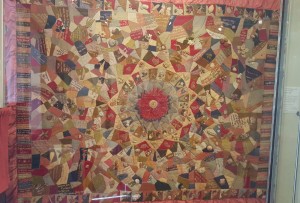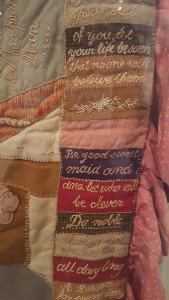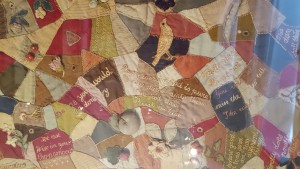Farnham Museum – what is craft? and a Victorian patchwork quilt
I have to confess that I have not always been a fan of visiting museums. Looking at static objects was not my idea of fun, and most town/village museums seemed too small with disparate and unfocused collections to be useful. Visiting museums seemed neither inspirational nor memorable.
Two very different museums changed my mind: the fun and wacky museum at Earnley (which also has a butterfly enclosure and gardens) and the vast Victoria & Albert Museum. Or maybe they were just exceptions?
What has really changed my view is the change in my own focus: now I take particular notice of the sections on craftwork – which often, of course, were the basis for local industries. Sometimes it feels like I am amassing a collection of clues to the history of craftwork.
Lets start with Farnham Museum. (I visited this on Wednesday. I had been intending to sell at nearby Bordon car boot but the February frost had put off many buyers and sellers, not worth risking the stall charge or spending the morning in the cold.)
Sadly, two of the downstairs rooms were out of action, having exhibition changeovers. But upstairs was a room devoted to craft.
The section labels posed stimulating teasers: what is craft and what does craft mean to you? And some answers: craft is a uniquely human experience (with the possible exception, one could argue, of the bower bird); craftwork is possible due to our ability to use tools and manipulate materials; craft can express the personality of the maker and owner; craftwork is often decorative; craft is different from fine art (whose only function is often only to be viewed); craft can be used to display wealth and status.
The most notable exhibit was a Victorian patchwork quilt, made by Esther Ann Peters for her grandchild Marjorie Jane Orchard who was born in 1888.
I just love the way that if you look at certain sections it looks random, but stand back and you can see a pattern, and how the combination of colours means it can fit in with many different colour schemes.




